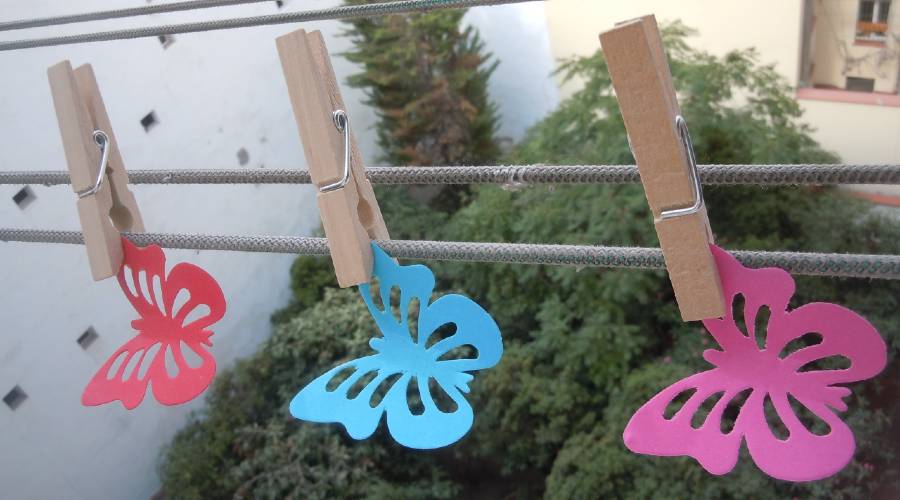Poetry Meter
Poetry meter is a way of measuring a line of poetry based on the rhythm of the words. But why should you care?
- As a reader, knowing about meter helps you understand how a poem is put together. You can see what rules the poet was following and how they used or went outside those rules. This lets you guess what was going through the poet's mind.
- If you want to write poetry, knowing about meter will make you a better poet. First, it helps you understand what poets have done in the past, so that you can learn from them. It allows you to use traditional forms such as sonnets. Even if you prefer to write in free verse, you should learn about traditional forms. Being aware of traditions gives you more flexibility to use aspects of them when you want to, or to "break the rules" in a more interesting way.
Stressed syllables and the iambic foot
Meter measures lines of poetry based on stressed and unstressed syllables. I'll explain. When we speak, we put the stress on a certain part of each word. For example, take the words "apple" and "fantastic."
- When we say the word "apple," we stress the first syllable, the "ap" part. We say "AP-ple," how not "ap-PLE."
- When we say the word "fantastic," we stress the second syllable. We say, "fan-TAS-tic," not "FAN-tas-tic" or "fan-tas-TIC."
In poetry, a unit of stressed and unstressed syllables is called a foot. For example, look at this line from Shakespeare: "No longer mourn for me when I am dead." The rhythm is, "bah-BAH bah-BAH bah-BAH bah-BAH bah-BAH. We read it like this: "no LON-ger MOURN for ME when I am DEAD." The type of foot Shakespeare used here is called an iamb. An iamb or an iambic foot has the rhythm bah-BAH. An unstressed syllable, then a stressed one. The iamb is the most common kind of foot in English poetry.
Here are three examples of words that have an iambic rhythm (bah-BAH).
- above (we say, "a-BOVE")
- support (we say, "sup-PORT")
- hurray (we say, "hur-RAY").
Here's a sentence written in iambic meter: "His noisy snoring woke the neighbors' dog." Bah-BAH bah-BAH bah-BAH bah-BAH bah-BAH.
Poetry meter - other types of feet:
Poetry meter - counting the feet
When we think about the meter of poem, in addition to looking at the kind of foot, we count the number of feet in each line.
- If there's one foot per line, it's monometer. Poetry written in monometer is very rare.
- If there are are two feet per line, it's called dimeter. Here's a sentence in trochaic dimeter: "Eat your dinner." BAH-bah (1) BAH-bah (2).
- Three feet per line = trimeter. Here's a sentence in iambic trimeter: "I eat the bread and cheese." Bah-BAH (1) bah-BAH (2) bah-BAH (3).
- Four feet per line = tetrameter. Here's a sentence in trochaic tetrameter: "Father ordered extra pizza." BAH-bah (1) BAh-bah (2) BAH-bah (3) BAh-bah (4).
- Five feet per line = pentameter. Here's a sentence in iambic pentameter: "I'll toast the bread and melt a piece of cheese." Bah-BAH (1) bah-BAH (2) bah-BAH (3) bah-BAH (4) bah-BAH (5).
- Six feet per line = hexameter or Alexandrine. A sentence in iambic hexameter: "I'll toast the bread and melt a piece of cheese, okay?" Bah-BAH (1) bah-BAH (2) bah-BAH (3) bah-BAH (4) bah-BAH (5) bah-BAH (6).
- Seven feet per line = heptameter. You get the idea...
Poetry meter and rhythm
When you read metered poetry, such as a sonnet in iambic pentameter, you may notice that the meter is sometimes sounds uneven or is hard to hear. Meter is just a form of measurement. The real rhythm of a poem is more complicated than that:
- None of us talk like robots. We give certain words and sounds more emphasis than others in a sentence, depending on a number of factors including the meaning of the words and our own personal speaking style. So not all of the stressed syllables have the same amount of stress, etc.
- We pause at the ends of ideas or the ends of sentences, even if these occur partway through a poetic line. So this creates a rhythmically variation. When the sentence ends or has a natural pause in the middle of a line of poetry, that's called a caesura.
- Poets vary meter or make exceptions in order to create desired rhythmic effects.
All of these elements combine to give each poem a unique music.
Join our eight-week course on poetry writing.

Poetry Meter - Next Steps
Join our free email group for writing tips and inspiration.
Try writing your own sonnet in iambic pentameter.
Click here to read about poem structure.
Click here to read about rhyme.